 Tough love: The stages of healing | The Pierced Consumer
Tough love: The stages of healing | The Pierced ConsumerHelp Center Drilling nipples After care The nipple piercings are a popular, stimulating and eye-catching modification. They take more time to heal than most body drilling, and therefore require careful recovery. In this article, we provide an overview of what to expect before you get your perforated nipples, recommended aftercare practices, and how to handle any problems with your nipple piercing(s). Before your nipple piercing There are a few things you should know before you take the plunge and get your nipples pierced. General recommendations:Recommendations for women:After your Piercing nippleAlways follow the professional instructions of a piercing artist after the nipples are passed. See our Aftercare DOS and we're down as general guidelines to enjoy a healthy recovery. Aftercare DOs Aftercare DON'TsHow to Clean Your Nipple Piercings There are two things to do to keep your nipple piercings clean: Salt is essential to life and good health. It is in our blood and in our cells; it maintains our electrolyte balance, sustains us during exercise, and even avoids hypothermia. Since salt is part of our chemical makeup, the marine salt solution is the least foreign cleaner that can be applied to a healing wound. Spraying your nipple piercings with saline wash will regularly keep your fistulas full of rubble, encourage them to heal well, and smooth any crispy that forms around your nipple rings so you can gently clean them. To make a complete sea salt solution, fill a small container (such as an injection glass) with a saline solution wash purchased in the store or a homemade sea salt solution. Increase forward, place the container against your chest to include one of your nipples, sit back straight while holding the container firmly against your chest, and let your nipple soak in the solution for up to 5 minutes. Then empty the container, rinse it, fill it with saline solution and repeat the process with your other nipple. Alternatively, you can saturate a series of clean cotton balls with saline solution and apply them one-time to your nipple piercings until you have kept them saturated for a total of 5 minutes. Making your own marine salt solution To make your own marine salt solution, you will need: Measure a cup of sterile water, stir in the 1/4 teaspoon of sea salt, add 2-3 drops of tea tree oil (if you wish), and let the solution cool at a comfortable temperature before applying it to your nipple piercings. Note: If you do not want to buy sterile water, you can boil tap water at the top of the stove for 5 minutes. Don't substitute the table salt for the sea salt. The table salt contains iodine, which can irritate healing perforations. To save money on suitable ingredients, take a look at ours. The tea tree oil is optional, but it is highly recommended if the skin around its perforations is dry and/or starts to break. Tea Tree Oil is a natural additive that will re-moisturize your skin safely. Add 2-3 drops of tea tree oil to home sea salt solutions and only 1 drop to store solutions. If your nipple piercings begin to opacize a thick, yellow, pus-like discharge or the surrounding tissue is red and inflated, consider adding an antiseptic piercing rinse to your daily cleaning routine. Tattoo Goo's or are excellent options. Antiseptic drilling treatments should be applied once or twice a day, either right after a full sea salt solution or between peaks Note: Do not apply antiseptic drilling treatments before a sea salt solution is removed. If you do, the solution will wash the antiseptic. Change your nipple jewelry The nipples of all are healed at a different rate. Consequently, you may be ready to change your initial jewelry anywhere between 3 and 9 months in the healing process. The exact time depends on when the swelling decreases. If you experience any swelling, you will need to keep the barbells from starting longer so that you do not put undue pressure on your healing fistulas. Prolonged pressure can cause necrosis (sexual death), which can cause infection. Once you've passed the 3-month mark (and a few more weeks have passed without swelling), ask her to lose if it's safe to change the tightest hairdressers who are less likely to grab her clothes. Note: See your piercing artist right away if your jewelry starts to press on your nipples at any point. He or she will replace his jewelry with longer hairdressers until the swelling is gone. You can safely change your own nipple jewelry after having had your drilling for a year. Buy a pair of , , shorter , or another one that fits your nipples closely but comfortably. Make sure you choose nipple rings that are the same caliber as your current jewelry. If you are not sure what diameter or length to choose, consult with your piercer. Alternatively, you can measure your current jewelry using our guidelines and use those measurements as an indicator to select new jewelry of proper size. By buying new nipple jewelry, you should also invest in a piercing recorder in the same caliber as your new jewelry. If you feel you need it, put a drop of a water-based lubricant like Astroglide at the end of the tapestry or next to our nipple where you will insert the tapestry. Screw your new nipple ring at the threaded end of the tapestry, then use the tapestry to slowly push your current nipple ring and thread the new through. Repeat with your other nipple. This is the easiest way to replace your nipple rings on your own. Stretching Your Nipple Piercings If you want your nipple piercings to be larger than the 14g to 12g standard, your piercing artist can be able to attach you with 10g rings to 6g nipple from the beginning. Once you are pierced, you will need to use the same sized nipple jewelry throughout the healing process. After having had your nipple piercings for a year, you can contemplate stretching them. General stretch recommendations Before changing to hairdressers that are larger than their current jewelry, massage the skin around their piercings. Emu oil will increase the elasticity of your skin and facilitate the insertion of new jewels. You may still want to use a perforating tapestry that is the same caliber as your newest nipple jewels; in such case, use a drop of water-based lubricant to facilitate the larger jewels in your fistulas as smoothly as possible. Once a whole size has risen (e.g. 12g to 10g), you should wait 1.5 times while you took your nipple piercings to heal initially before graduating to the next larger caliber. Stretching with stretching tape allows for a safe and gradual stretching process. It's an alternative to stretching a whole size at once. Simply remove one of your barbells, wrap it with a single layer of stretching tape, re-sist it and then repeat with your other barbell. You'll have to wait a few weeks to a month for your fistulas to calm down before adding another layer of tape to your chins. Once you've added a full measure of layers of stretched ribbons to your current barbells, you can replace your jewelry with barbells in the next size, wait a few weeks, and then start adding a layer of stretch tape every few weeks. Repeat this process until it has reached the desired size. Stirpe with S weights and hooks This type of stretch is a bold and stimulating approach. Pick up a couple of, two, and some small weights. Walk around without a shirt in the comfort of your home with the weights hanging from your captive rings through the S-hooks. Weights can also add a new dimension to nipple stimulation and sex play. Common nipple drilling problems There are a variety of problems you can experience while your nipple piercings are healing. It is important to get acquainted with these common problems, so you can quickly identify and address them if they arise. Swelling is especially common during the process of nipple healing. That's why it's standard practice to use longer barbells as boot jewelry; longer barbells allow space for your nipples to swell. See your piercing artist immediately if he swells so much that the ends of his hairdressers begin to press uncomfortablely on his nipples. As mentioned above, prolonged pressure can cause tissue under jewellery to die, a process called necrosis. This puts you at a higher risk of infection. Incomeness During menstruationWomen with nipple piercings often complain that their breasts are extra pain and tender to the touch during their menstrual cycles. The bigger the breasts of a woman, the greater the discomfort, although this can also be a problem for the smaller women. The longer you have your nipple piercings, the less likely it will be to contribute to greater pain and tenderness during menstruation. In the meantime, you can remove the edge of your discomfort using fresh compresses and taking nonsteroidal anti-inflammatory drugs, following the "Swelling" section guidelines above. InfectionsSometimes, despite your best efforts, you can develop a nipple perforation infection in one or both fistulas. Symptoms of infection include thick and yellowish puss; red stripes that radiate from your piercing (s); skin that is warm to the touch; and sometimes fever. If you notice any of these symptoms early, you may be able to fight an infection by increasing your nipple piercing graduate routine. Make 2 to 3 full sea salt solution soaks per day and use to clean rubble. You should also add one or your regimen once or twice a day after your complete peaks; antiseptics can also be used between peaks to get full benefits. If you have not incorporated tea tree oil into your marine salt solution, you should start as soon as you see the first sign of infection. is a natural antiseptic that will improve your marine salt solutions and help combat the infection. You should see signs of improvement within a few days after increasing your post-treatment regime. If you do not, or if your infection gets worse, consult your family doctor immediately. You can prescribe an antibiotic to fight the infection. Don't worry if your doctor tells you it'd be better to remove your nipple rings. It is actually better to keep your fistulas open to encourage drainage and prevent an abscess from forming. If you decide to remove the nipple rings, make sure you continue to make a complete sea salt solution by soaking and twisting your nipples with post-care piercing spray 3 to 6 times a day between peaks to keep your fistulas lit while closing. Hypergranulation Hypergranulation can occur around nipple piercings due to prolonged pressure and/or humidity caused by factors such as excessive sweat and narrow jewelry. It may appear as an angry red tissue ring, swollen around a perforating site or as a single red blow that appears filled with liquid on the edge of a fistula. The coloring and swelling of hypergranations make many people mistakenly think they have developed a keloid scar, but very few people are actually prone to keloids. One way to differentiate between the two is that a keloid will continue to grow far beyond a perforating site, while hypergranations tend to form immediately around a fistula. In addition, a keloid scar would not respond positively to improved perforation after taking care of the way a hypergranulation problem will. If you develop one of these famous red holes, you can take comfort knowing that it is only a temporary problem that can be easily remedied with some small changes in your jewelry and care regimen. The first step to board a hypergranulation is to see your piercer and have your replaced jewelry with a looser barbell. Once the pressure is out of your irritated fistula, you should increase your aftertaste regimen and make 2 to 3 complete sea salt solution soaking per day (preferably using a solution that is improved with tea tree oil). After cleaning the nipple piercings, remove the dry tissue with a clean tissue to minimize leftover moisture. Do not clean the skin in an approximate way; simply blot gently. Keep this routine for the next few weeks, and your hypergranulation problem should decrease. ScarsThere are two common types of piercing scars that can develop around nipple piercings: hypertrophic and atropical scars. Hypertrophic scars are lifted, often taken by the flesh, and have rough textured topes. They form immediately around drilling sites when they occur. Atropical scars have a composition similar to hypertrophic scars, but they are recess scars that usually only develop in retired perforation sites. It happens when the scar tissue is short of filling a closed fistula, leaving you with an indent where your hole was piercing. If you develop a hypertrophic scar around the side of one of your nipple piercings, or if you remove your nipple rings and develop atropical scars, you can treat them with silicone scar therapy gel or jojoba oil. None of the products should be used for the first 12 months after your nipples are pierced, because they could block your fistulas, catch in rubble or bacteria and potentially lead to an infection. Once your nipple piercings are well cured, it is perfectly safe to massage a small amount of silicone gel or in the scar tissue twice a day until the scar is minimized or eliminated enough. A small percentage of the population may experience a third type of scarring problem known as keloid scars. Keloids are usually a genetic problem, so if any of your immediate family members are prone to them, you might be, too. You probably know if you're prone to keloids well before they touch your nipples. If you know you're prone to them, you shouldn't get any body piercing. If you have never had a form of keloid scar around a cut, perforation or other wound, it is very unlikely that you will have a problem with them when you get your nipples pierced. Keloid scars require medical intervention. If you had to develop one around a nipple piercing, you'd have to see a dermatologist to board it. The doctor may offer you one or a combination of several treatment options, such as cryotherapy to freeze scar tissue, laser therapy to burn the scar, surgical removal, and/or steroid injections to reduce scar tissue. Some doctors also recommend using silicone scar therapy gel or jojoba oil as a supplement to other keloid scar treatments. For more information on nipple piercing scars, see our blog post and our Body Piercing Scars article. Additional InformationSign up with other people who have nipple piercings using our . Read about other people, or post your own questions. If you're interested in seeing nipple piercing photos, see our online photo. Once you sign in to your account, you can see photos of both and Note: Our gallery contains mature content that is only suitable for viewers who have identified themselves and 18 years or more. If you need help to navigate and use the forum or gallery, read our articles. CategoryHelpful linksshoppingget in touchsign up to our newsletter
Healing StagesOne of the first questions that almost all customers ask after being drilled is "When can I change the jewelry?" With all the jewelry options available, it's no wonder it's the first thing in your mind. However, giving you enough time to heal is incredibly important and here we will explain why. A word we like to use with customers to help understand the importance of healing is "inundated." Which is exactly what a piercing is. A piercing is a punctual wound that and the time to heal in order to accept piercing. The healing starts almost immediately after receiving your new piercing and may take six months to one year or more to complete. Piercings, like any other wound, cure in four stages: First stage of healing – Hatasis The only goal of the first phase of healing is to stop the loss of blood. Have you ever wondered how your piercing stops bleeding? It's because of the hemostasis. Once the piercing is done and the jewelry is inserted, the piercer will set up its instruments and press its new piercing with cotton hysops. This will be done in 20 to 30 seconds and helps with coagulation. This is just taking care of the minor, superficial bleeding that you can see. Meanwhile, inside the wound, the red blood cells and the platelets are working to stop the bleeding that cannot be seen. Collagen fibers on the walls of the vessels activate the platelets in the blood to help form a barrier or plug to prevent more bleeding and prevent any pathogen from entering the wound. This forms a crust that may look like dry blood around its perforation. Second stage of healing – PhaseStage two inflation is also known as the defensive stage. The focus in phase two of healing is to destroy bacteria and eliminate any debris left in the wound. At this stage, neutrophils, which are a type of white blood cells, enter the area of the wound and begin to clean it. They remove any harmful and debris bacteria that may irritate or cause infection. This helps prepare the area for the new growth of the tissue. Once you've done some of that, the macrophages advance and end the process of clearing debris, such as dead or damaged cells. Macrophages also secrete growth factors and proteins that attract cells from their immune system to help repair tissues. Dermis and epidermis also work together and contract to close the wound while fibroblasts help create connective tissue to close the wound. During the inflammatory phase of healing, the permeability of the vessels increases, allowing the fluid to accumulate in the tissue around the wound. This is when you can begin to experience healing signs such as redness, pain, drainage that is clear/white-ish in color, and inflammation. Third phase of healing – Proliferative Phase In the third stage of healing, the bulk tissue begins to form. Fibroblasts make their way to the wound and begin to contract and in return, pulling from the outer edges of the wound to the center. This is the number one reason you don't want to change your jewelry early. Although there may be phases where the wound is feeling is healed enough, it may not be yet. This is because the outer edges of the piercing are healing first and slowly towards the center. Removing and reinserting jewelry can damage this delicate tissue and start healing again. Fourth Stage of Healing – Maturation This last stage is also known as the stage of remodeling. It's when the wound makes a lot of change and ripening. It closes completely and the cells that were used to help heal or repair the wound are no longer necessary and are eliminated or killed. This last phase can last from six months to two years. The important thing to remember is that everyone heals differently. There are many factors to consider how well you take care of your drilling, your general health and lifestyle, and also the quality of the circulation in the area you are choosing to be drilled. A lip piercing or any other piercing done on a mucous membrane, for example, often cures much faster than any cartilage perforation. You can help the process along making a consistent regimen later. Sea salt soaks help tear the wound and drain it. washes remove any residence from the piercing surface and jewelry before they can enter and cause irritation. Your body healing a piercing is a miraculous process. It is better to understand how that process works so that you can have a piercing that looks beautiful and hard. Minneapolis, MNPhone: (612) 354-7220Bloomington, MNPhone: (952) 854-8000Fargo, NDPhone: (701) 492-3955Mankato, MNPhone: (507) 625-8077Billings, MTPhone: (406) 652-5916St Cloud, MNPhone: (384) 252-1604
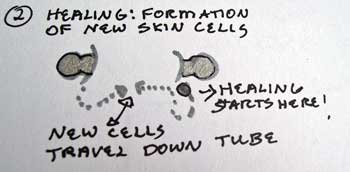
Tough love: The stages of healing | The Pierced Consumer
Nipple Piercing Facts and FAQs - How Do I Know if My Nipple Ring Is Infected?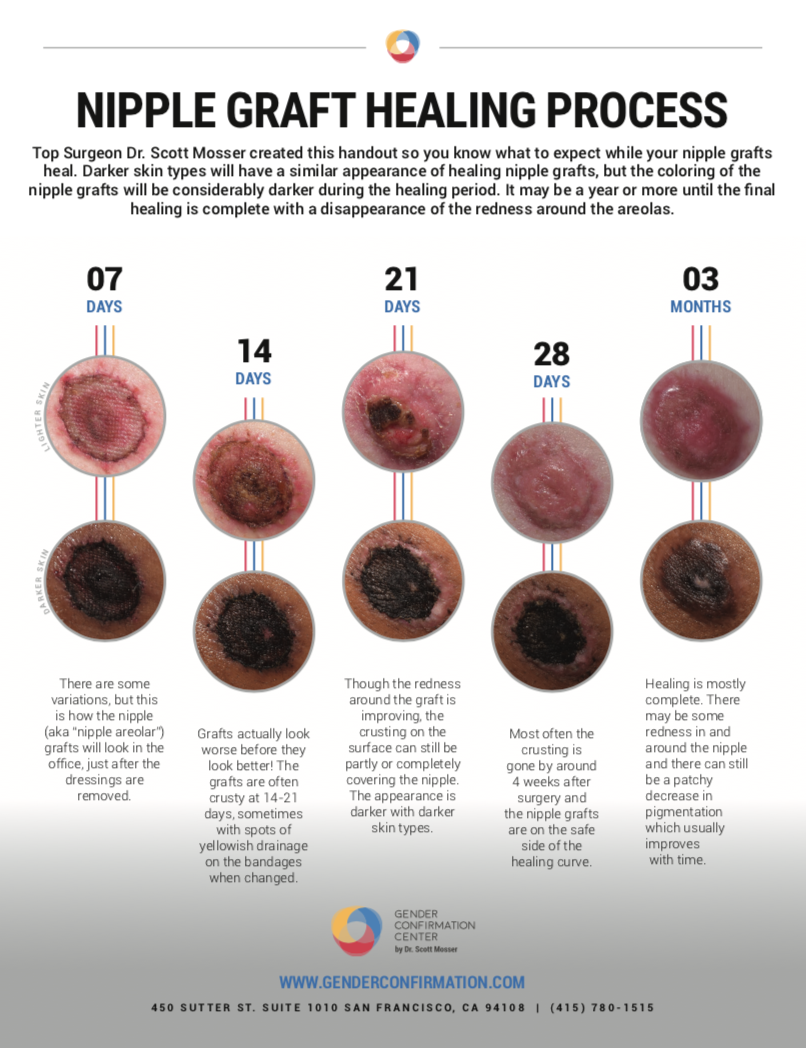
Nipple graft healing ftm survival guide
MY NIPPLE PIERCING EXPERIENCE + Q&A (pain, healing process etc..) - YouTube
Tough love: The stages of healing | The Pierced Consumer
How to Get Your Nipples Pierced (with Pictures) - wikiHow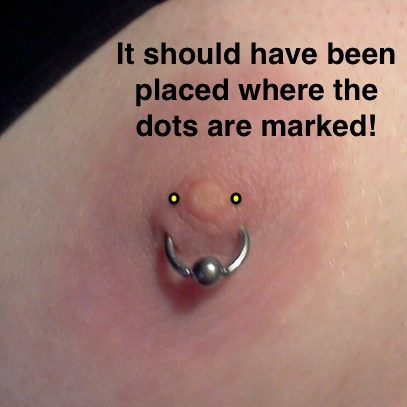
Male Nipple Piercing | Elayne Angel's Piercing Bible
Nipple Piercing Aftercare | Painfulpleasures Inc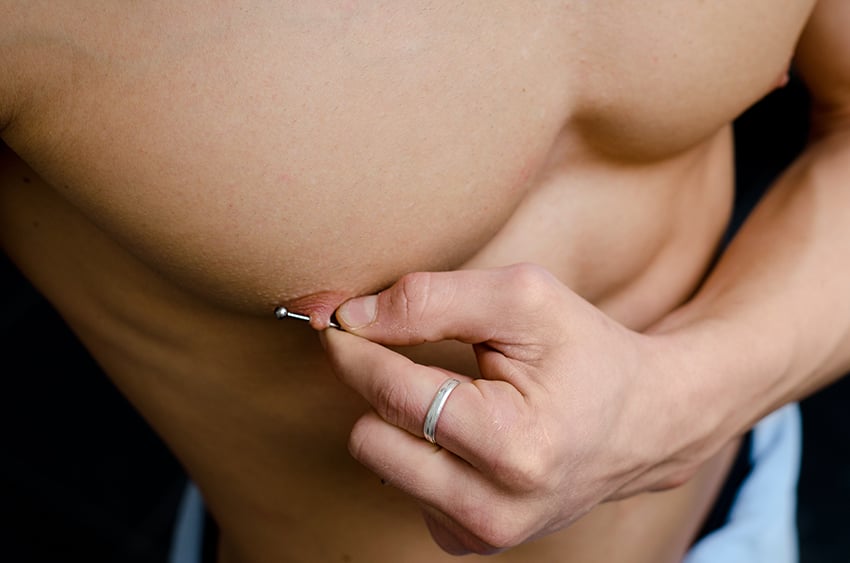
Nipple Piercing Aftercare: All You Need to Know About Happy Healing | FreshTrends Body Jewelry Blog![SpunoutBodyPiercing on Twitter:]()
SpunoutBodyPiercing on Twitter: "People keep asking us about Nipple Piercing Placements, these major two points AREN'T TO BE IGNORED! #safepiercings http://t.co/aKl7Gmoa5M"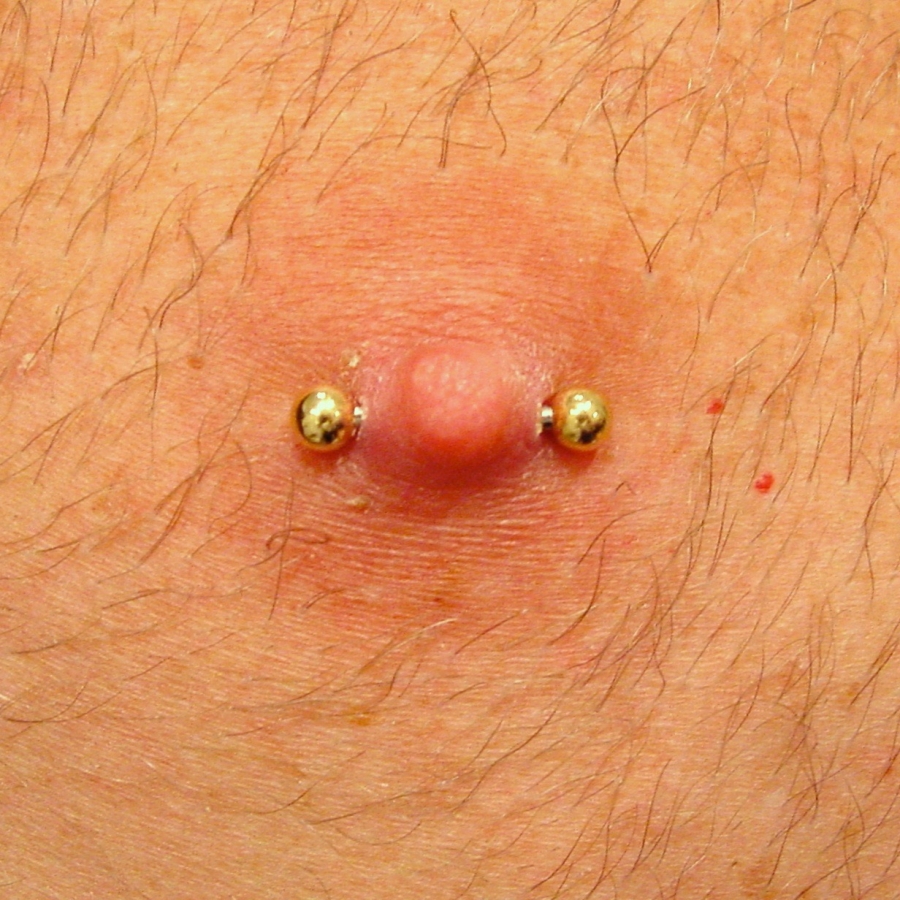
Male Nipple Piercing | Elayne Angel's Piercing Bible/GettyImages-89508178-ced524d6e1a9489aba815ce9d58fcdb8.jpg)
Pierced Nipples: What Are the Health Risks?
Nipple Piercing Aftercare | Painfulpleasures Inc
the RevolverZ !! tatoo art co. - Nipple piercing healed with Opal Nipple Clicker. Done by Alex with Wildcat Jewellery. Thank you. | Facebook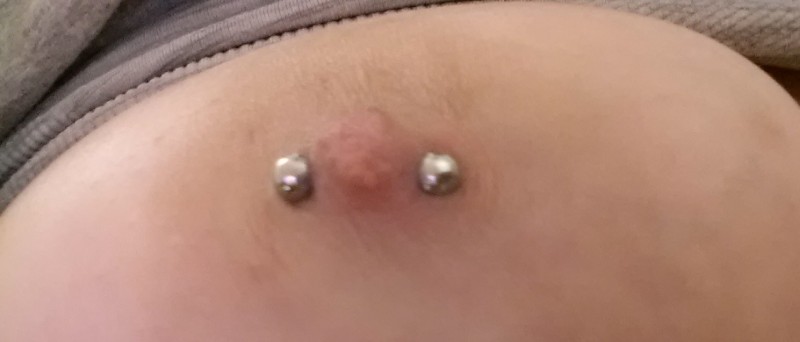
Female Nipple Piercing Nightmare (With Photos) | Elayne
The Stages Of A Healing Piercing – SpiritAdornments
The Stages of Healing | Axiom Body Piercing Studio
HOW LONG DO NIPPLE PIERCINGS TAKE TO HEAL - Professional Fan Girls
How Do I Know If My Nipple Piercing Is Healed? - A Fashion Blog
Every type of piercing heals at its own rate, but in this article we'll explain everything you need… | Nose piercing healing, Nose piercing scar, Piercing aftercare
Nipple Piercing Information & Aftercare
Cheek Piercing Aftercare | Painfulpleasures Inc
The Best Beach-Ready Piercings for Toronto Summers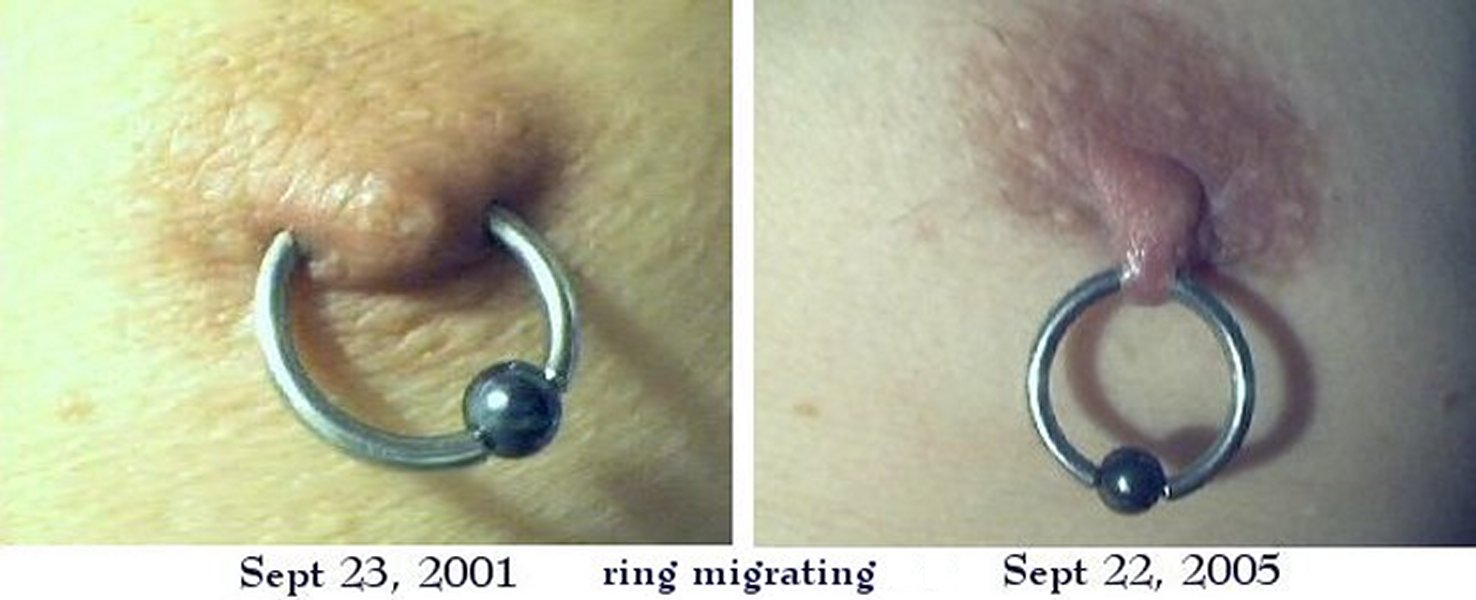
Piercing migration - Wikipedia
Nipple Piercing Aftercare: Best Practices and Cautions
Nipple Piercing Aftercare: Best Practices and Cautions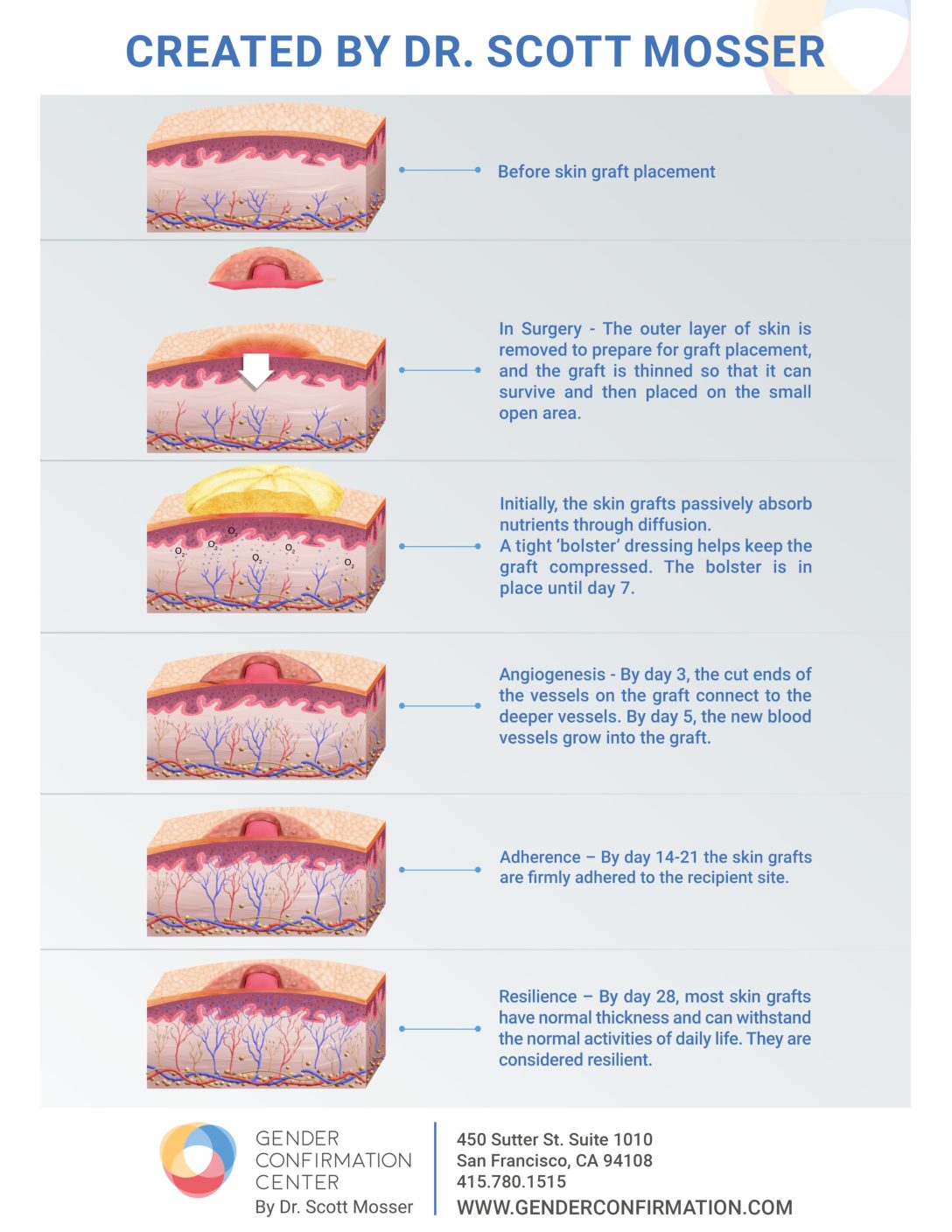
Nipple graft healing ftm survival guide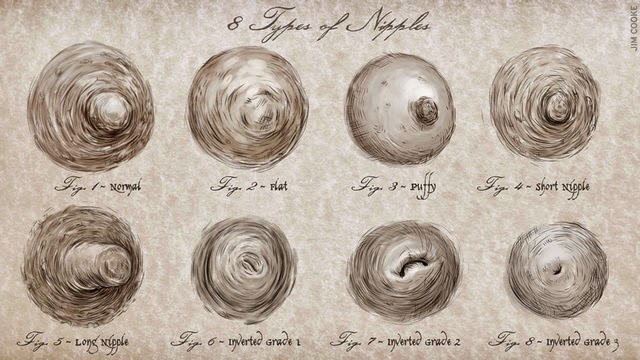
All Breasts Can Breastfeed - The Alpha Parent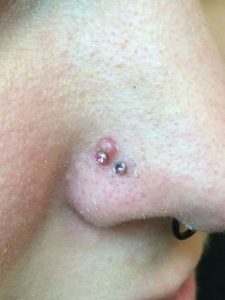
Common Nostril Piercing Questions | Almost Famous Body Piercing
Nipple Piercing Aftercare: Best Practices and Cautions
The Stages of Healing | Axiom Body Piercing Studio:max_bytes(150000):strip_icc()/conch-piercing-a0d65fe872c949a8b7d8be1caac5cd31.jpg)
Conch Piercings 101: What to Know Before Getting Pierced
Nipple Piercing Guide: What To Expect From Cost To Pain/Stocksy_txpb1ebe7e0EUL200_Medium_2229419-c4d7ff7f696e42d297e7311d468ed2ee.jpg)
Healing Times for Common Body Piercings
Nipple Piercing Aftercare: Best Practices and Cautions
A Complete Guide to Daith Piercings
How to Get Your Nipples Pierced (with Pictures) - wikiHow
Body Piercings – The Complete Guide – Spencers Party Blog
Nipple Piercing Aftercare | Painfulpleasures Inc
Belly Button Piercing Information & Aftercare | Urban Body Jewelry
 Tough love: The stages of healing | The Pierced Consumer
Tough love: The stages of healing | The Pierced Consumer









/GettyImages-89508178-ced524d6e1a9489aba815ce9d58fcdb8.jpg)



















:max_bytes(150000):strip_icc()/conch-piercing-a0d65fe872c949a8b7d8be1caac5cd31.jpg)

/Stocksy_txpb1ebe7e0EUL200_Medium_2229419-c4d7ff7f696e42d297e7311d468ed2ee.jpg)






Posting Komentar untuk "nipple piercing healing timeline"